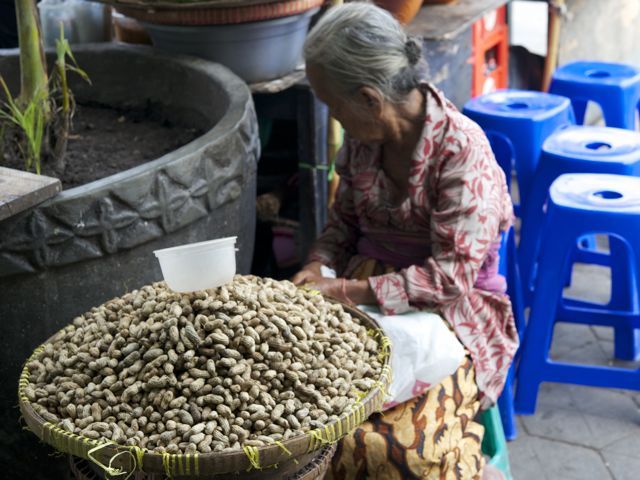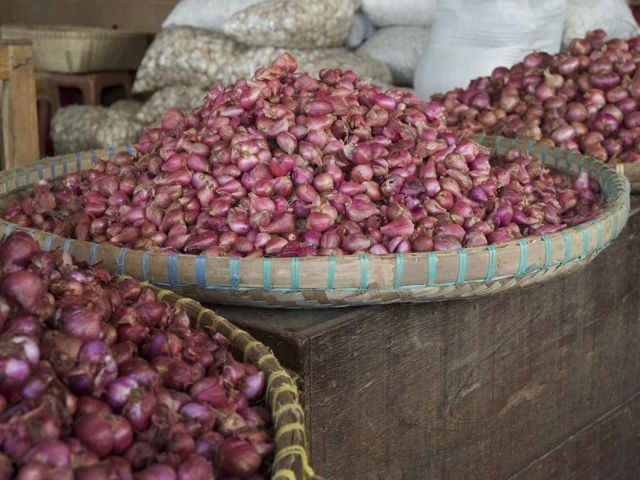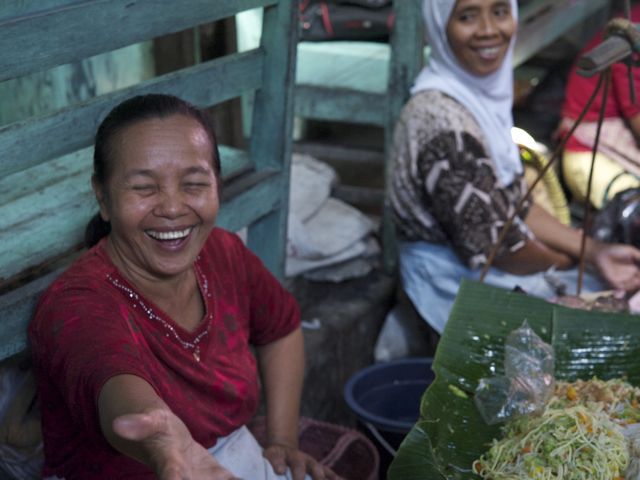Though there are some male purveyors in the markets here in Yogyakarta, the majority of them are women. Many are old, very old, with frail frames, deeply lined faces and tiny, gnarled hands. Others are robust, middle-aged and full of high spirits, greeting a foreigner with a cheery "Hallo, madam!" They are clearly industrious and capable, eking out a living without the benefit of much education, I would imagine. In a city that is 70% Muslin, many women wear the head scarf, the hijab. Most favor traditional batik clothing over Western dress. I was captivated by their faces, their pride, their joyful spirits. I'm careful taking their pictures, though, as I'm aware it can be an imposition. I either ask permission, which is generally granted but often elicits a self-conscious pose; or I try to snap discreetly, which is a bit catch-as-catch-can. Here follows my tribute to these ladies of the market.
Read More...
Twitter @glutton4life
5.12.11 To Market, Part 2: Fresh Food
Food is everywhere here in Yogyakarta. Rickety carts offering noodles and soups and fried this-and-that line virtually every street. Fruit stands overflow with piles of black-skinned mangoes, bunches of red bananas, scaly snake fruit and enormous purple grapes. Girls ride by on bicycles rigged up with wooden boxes that hold bottles of colored drinks to mix and sell on the spot. Yes, it's hot and grimy but the ingredients look fresh and everyone is eating with gusto. Westerners are so afraid of Third World street food, but meanwhile we are washing our own e coli-imbued beef with bleach. Take a look at these market photos and tell me you wouldn't want to sample the wares.
Read More...
5.11.11 To Market, Part 1: Exotic Tastes
Foods markets, especially in Third World countries, are where you can really see what the people are all about. In Yogyakarta, the “traditional market,” as my driver Toto referred to the place where locals shop for food and dry goods, is an open-air, multi-level building teeming with humanity—sullen youths smoking clove cigarettes, wizened old ladies hunched over baskets of shallots, krupuk sellers, batik-clad matrons shopping for fish, the occasional leathery homeless man brandishing a tin begging cup. Around the perimeter of the market are countless little stands where vendors and cooks ply their specialties: fresh salads, soups, fried tofu and tempeh, cow skin crackers, grilled satays, iced coconut drinks with green cam cau jelly, sweet cakes made from glutinous rice flour. There is a general din composed of the constant roar of motorbikes, the swishing of beans though bamboo strainers, the clang of metal spoons and the sweet melodies of caged songbirds. I am never happier than drifting through such a place, absorbing it all (even the scary smells), tasting what I dare, interacting when I can and marveling at this daily life that is so unlike my own. I took so many pictures that I’ll spread them over a few posts. This one features the many strange and exotic foods I came across (but did not eat) at Beringharjo market, which was built on the site of a former banyan tree forest in 1758.
Read More...
Read More...









